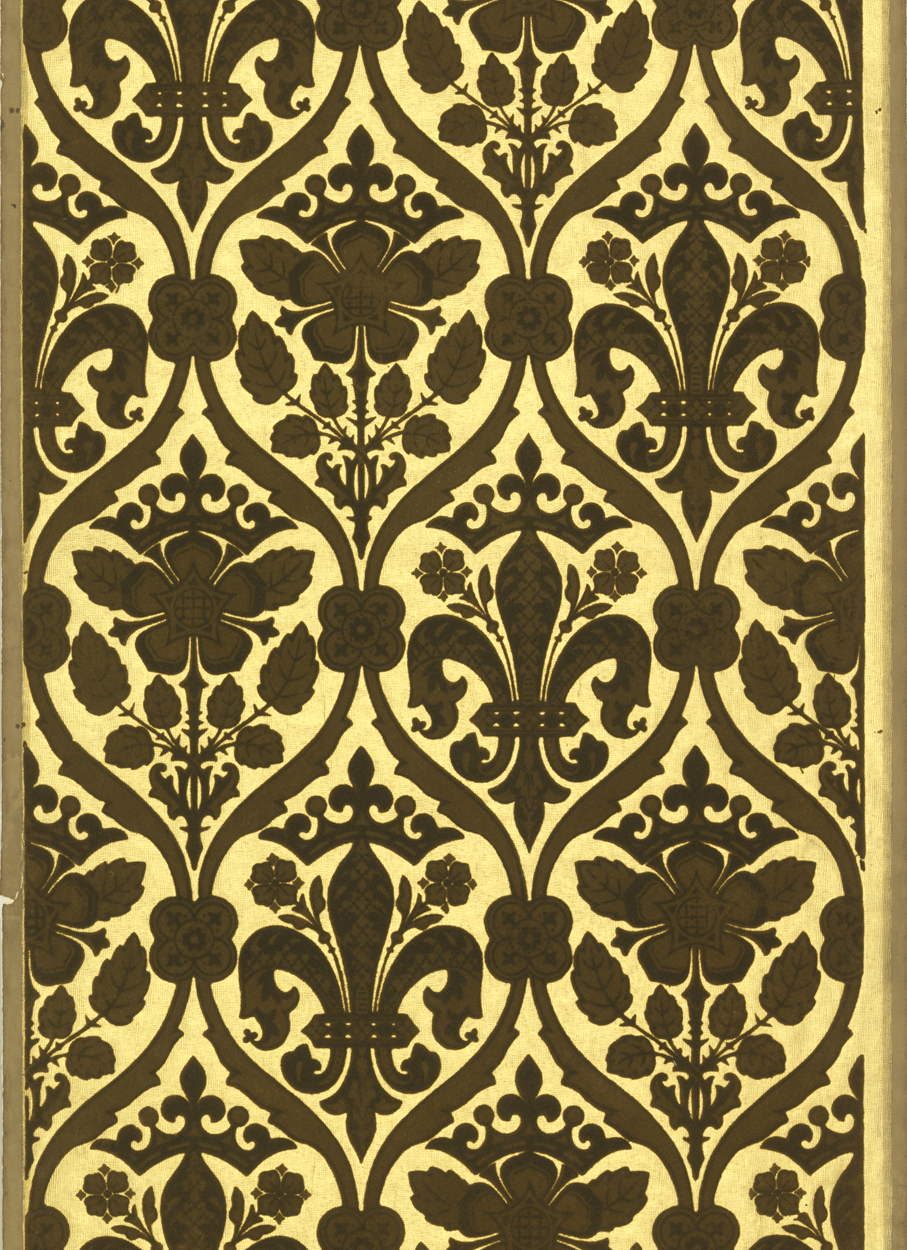This grand English wallpaper was designed by A.W.N Pugin in the mid-nineteenth century, and is a prime example of the Gothic Revival style he championed. The brown pattern is block printed and flocked on a metallic gold ground. The pattern features alternating crowned fleur-de-lis and Tudor roses, set within a diaper or ogival framework. The fleur-de-lis and Tudor rose are both heraldic devices of various English monarchs, and this clever incorporation of British national symbols into interior design would have been much appreciated by Pugin’s Victorian audience. This is one of four Pugin-designed wallpapers in the collection; two of the others were produced for private commissions. Rugin designed for three distinct markets: private commissions; Palace of Westminster, by far the largest category for which he designed over 100 different patterns; and wallpapers for more general use. John Gregory Crace was tasked with the execution of Pugin’s wallpapers, a number of which were contracted out to Samuel Scott & Co.
An architect by trade, Pugin hoped that by crafting interiors and exteriors reflecting the art of the Middle Ages, he could nudge Victorian society a little bit closer to a romanticized past. In 1836 Pugin published a book entitled Contrasts, which put forth an argument for a return to Medieval aesthetics and social structure. The book compared contemporary buildings against their Medieval counterparts. Though the comparisons were somewhat unfairly skewed in favor of the Middle Ages, the book made a lasting impression: Pugin’s celebration of all things Gothic is credited with inspiring the British Arts and Crafts movement, and the Medieval-style guilds established under its umbrella.
See this work on view beginning December 12 in the Immersion Room, an opening exhibition that features selected wallcoverings projected onto the walls at full scale and an interactive design table where visitors can create their own.
Anna Rasche is a student in the History of Decorative Arts & Design graduate Program at the Cooper Hewitt, and is a Master’s Fellow in the Wallcoverings Department.
